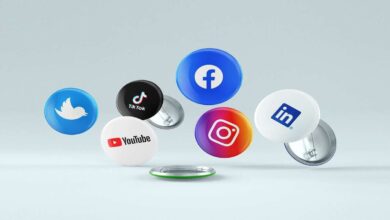
Smartphone app development is responsible for the app’s functionality and enables users to interact with it.
Smartphone app design ensures users want to interact with an app.
With almost two million applications in the App Store and over 2,8 million apps in Google Play, it is very hard to stand out. More often than not, the design of the mobile app is what helps catch the user’s eye and makes them stay.
Today we will look into the most common app design mistakes and understand how growing businesses can avoid them as they develop MVP of the product.
Mistakes in mobile application design and how to avoid them
As a startup web app development agency and mobile apps specialist, Emphasoft works with many clients who are developing apps from scratch or trying to revamp their existing solutions.
Here are the most common mistakes that are made with mobile app design and the ways to avoid those mistakes.
#1 Failing to run proper user-testing
User tests take time, are often complex to arrange, and the outcomes are difficult to interpret. Companies that are short on time, resources, or both are tempted to skip user tests or make them shorter, relying on the expertise of their employees.
And while yes, you should trust your employees’ opinions, their perception of the app will never be the same as a random stranger’s. The truth of the matter is that people don’t use our mobile apps the way we think they do. So if you want to build a successful app that will be downloaded, loved, and shared, then allocate enough time for proper testing to identify what makes sense to the user, what features are ignored, and what is utilised the most and how.
The last thing you want is to make a fully working product that nobody is interested in using.
#2 A meh first impression
Books get judged by their covers all the time, and mobile apps are judged by the first few minutes (sometimes seconds) that the user plays with them for.
In startup MVP development, the focus is often on the core functionality, and rightfully so. However, the first impression easily becomes the last one if we don’t think through the introduction of the user to the app.
The two ways you can impact the first impression with mobile apps are:
- A welcome screen that is not content-heavy but offers beautiful visuals.
- Quick onboarding that takes not more than a minute and highlights the key features along with little gems that are not necessarily obvious when you first open the app.
#3 Forgetting about the user flow
Mobile app design can never be about aesthetics only. First and foremost, the app has to be intuitive and logical, allowing users to navigate it without difficulty.
User experience (UX) has to be at the forefront of all design-related decisions at every stage of MVP product development. Users may appreciate your design, but if the app is bulky and awkward, they will find an alternative and forget all about you.
#4 Not understanding the purpose of the mobile app
Just like all design decisions should be made with UX in mind, they should also consider the purpose of the mobile app. Is it made for brand awareness? Is it supposed to generate sales? What are the primary use cases the business expects from the app?
Customer focus and attention to detail are two things that help companies stand out in the pool of five million mobile apps worldwide. And, more importantly, it’s what helps apps stay relevant over a longer period of time which is what everyone is striving for.
That’s why the design team has to have a clear understanding of why the app is being developed before they can start their creative process. If the purpose is not clear, they need to reach out to shareholders or the CEO to find out.
#5 Overwhelming users with design
When negotiating MVP development services with Emphasoft, many startup founders want to add as many features and design tricks as possible to surprise the user and prove their app is all they need.
Instead of producing the results they expect, such an approach usually leads to design and feature fatigue when the user is so overwhelmed with what they see that they barely understand what they can do. And what happens next? They close the app and never use it again.
As an alternative take on design for MVP, Emphasoft team always recommends starting with a couple of the core design features and then adding more slowly while watching user reactions closely.
#6 Ignoring the budget
One of the first things an MVP development company asks when working with a client on the mobile app is budget.
Whether we like it or not, financial constraints define a lot in the app. Everyone, including the design team, has to bear the numbers in mind when doing their part of the work. And if the design project comes out to be over budget and unrealistic, compromises are drawn up quickly and the result is usually mediocre.
Things that look good and make an impression can be easy to draw but very costly and difficult to execute.
If a company wants to have an over-the-top design but the current situation doesn’t allow that, the good solution would be to create a transitional design that is cheaper to build but allows structurally to turn it into the original vision later, when funds and time are less scarce.
#7 Applying web app logic to mobile apps
MVP website development and mobile app development are very different, and so are their designs.
The design logic that works with websites does not translate well to mobile apps because users consume data and interact with those two mediums differently. If the mobile app is created in addition to the existing website, the team still needs to start from scratch and make sure they test everything twice before borrowing a technique from the website.
How to make mobile app design easy?
Mobile app design is an important part of the development journey that can’t be an afterthought. Outsourcing mobile app design and other services for startups to an agency, such as Emphasoft, enables startups to focus on the core development and not spread themselves too thin while getting top-quality results.
Outsourcing mobile app design and other projects is a smart alternative to doing everything in-house. Companies that offer MVP development for startups have vast experience and a fully-equipped team with streamlined processes. This means that they can do the work faster, avoid common mistakes, and work within the budget. Sometimes they are even able to consult the startup and help make the right decision as they have worked with countless clients before and have unique expertise.



